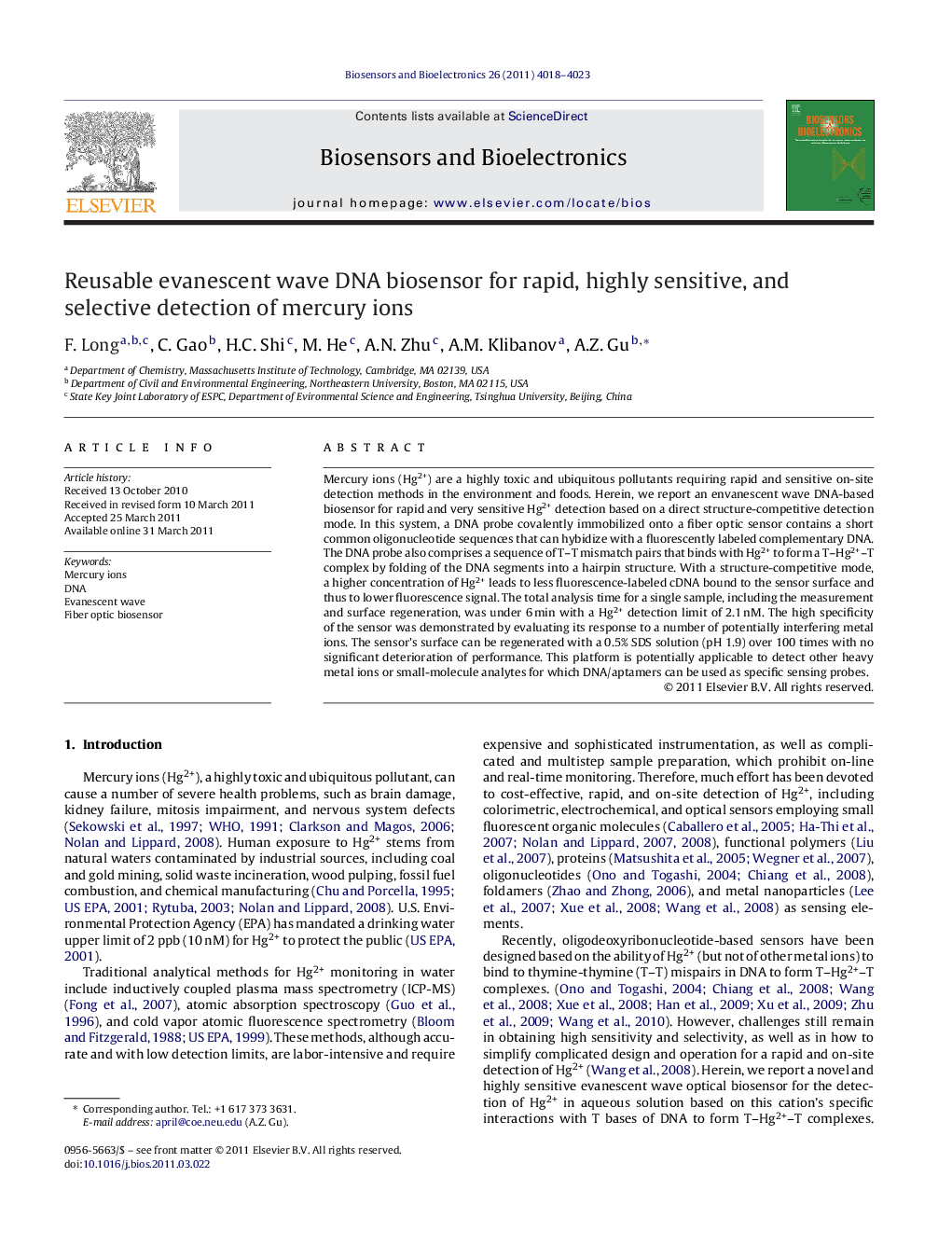| Article ID | Journal | Published Year | Pages | File Type |
|---|---|---|---|---|
| 868221 | Biosensors and Bioelectronics | 2011 | 6 Pages |
Mercury ions (Hg2+) are a highly toxic and ubiquitous pollutants requiring rapid and sensitive on-site detection methods in the environment and foods. Herein, we report an envanescent wave DNA-based biosensor for rapid and very sensitive Hg2+ detection based on a direct structure-competitive detection mode. In this system, a DNA probe covalently immobilized onto a fiber optic sensor contains a short common oligonucleotide sequences that can hybidize with a fluorescently labeled complementary DNA. The DNA probe also comprises a sequence of T–T mismatch pairs that binds with Hg2+ to form a T–Hg2+–T complex by folding of the DNA segments into a hairpin structure. With a structure-competitive mode, a higher concentration of Hg2+ leads to less fluorescence-labeled cDNA bound to the sensor surface and thus to lower fluorescence signal. The total analysis time for a single sample, including the measurement and surface regeneration, was under 6 min with a Hg2+ detection limit of 2.1 nM. The high specificity of the sensor was demonstrated by evaluating its response to a number of potentially interfering metal ions. The sensor's surface can be regenerated with a 0.5% SDS solution (pH 1.9) over 100 times with no significant deterioration of performance. This platform is potentially applicable to detect other heavy metal ions or small-molecule analytes for which DNA/aptamers can be used as specific sensing probes.
